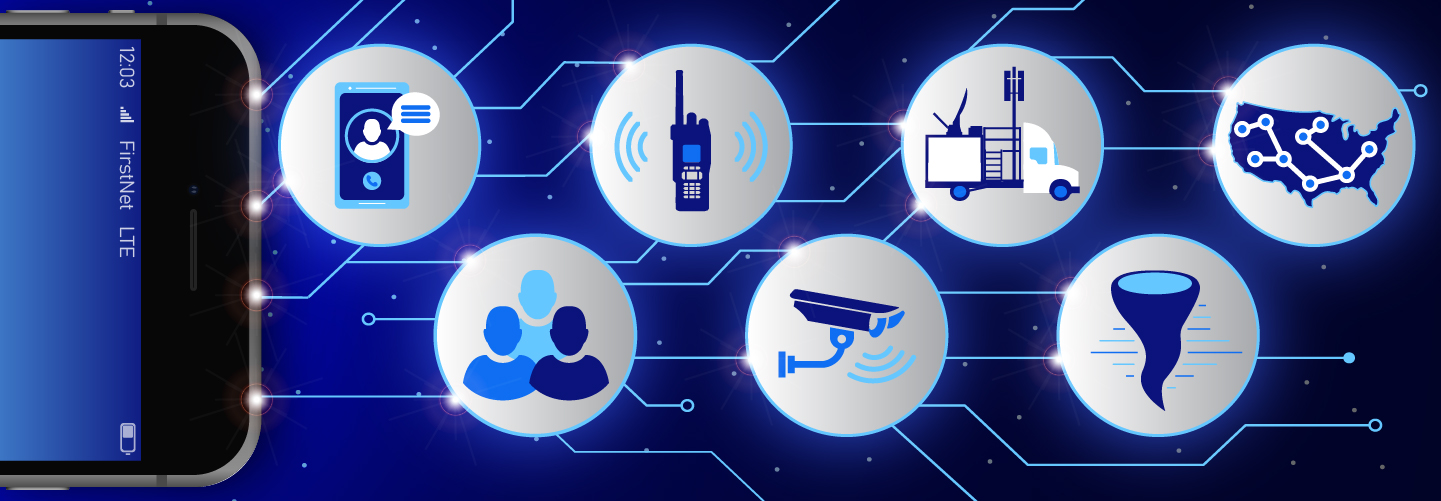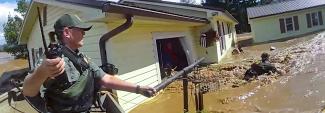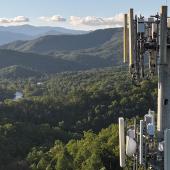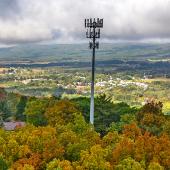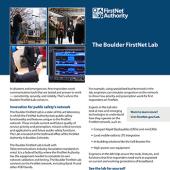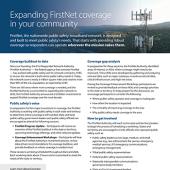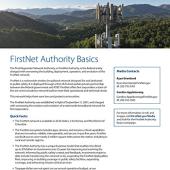This blog is a repost from the IAEM Bulletin, originally published in May 2023.
Volatile weather is becoming our new normal. To prepare for this reality, emergency managers are turning to a new tool: virtual emergency operations centers (EOCs).
Virtual EOCs started to take off during the COVID-19 pandemic when everyone was trying to minimize contact. Today, virtual EOCs continue to be used because of the operational benefits they offer. There has been a shift in mindset about virtual EOCs — they’re no longer just a backup plan for when things go wrong but another way to operate in the emergency management space.
Justin Kates is 1st Vice President of the International Association of Emergency Managers and former Director of Emergency Management for Somerville, Massachusetts and Nashua, New Hampshire. He has overseen many virtual EOC activations in both jurisdictions, beginning during the pandemic and continuing through more recent incidents like a tropical storm and a mass transit shutdown. Justin sees virtual EOCs as important to the future of emergency management.
“There’s always going to be a role for physical EOCs,” said Justin. “But I believe that we’ll see virtual EOCs as a way to improve our coordination and collaboration across all partners during a disaster.”
Virtual EOCs can be especially useful during natural disasters, keeping staff from traveling through bad weather conditions. Once the virtual EOC is activated, staff can log on from anywhere and response operations can start without delay.
EOCs ideal for virtual operations
Because of the collaborative nature of the EOC, it’s an environment primed for virtual operations. Partners representing different agencies and organizations come together to solve challenging problems. Many aspects of emergency management are already done in a distributed environment.
“You’re already communicating with other EOCs’ command posts, critical facilities, and other partners,” Justin said. “It’s a misconception that everything takes place inside that big room with all the screens, phones, and computers. That’s just the tip of the iceberg.”
“All kinds of other resources and assets — sometimes from government agencies and sometimes from the private sector — are distributed across your jurisdiction or even outside of your jurisdiction,” he explained. Most EOCs already manage these resources in a virtual environment.
FirstNet supports virtual EOCs
FirstNet is the nationwide public safety broadband network. It is designed for public safety operations. Emergency managers benefit from priority and preemption on the network, ensuring reliable, secure on-demand connectivity — even when there is network congestion in the area. FirstNet is also interoperable, making it easy to communicate with responders across disciplines and regions.
FirstNet can be especially helpful with three components important to a successful virtual EOC:
- Reliable connectivity
- Consultation with FEMA guidelines
- Communication platforms and apps suited to emergency management
Reliable connectivity is key
In Justin’s experience with virtual EOCs, one of the most important components is reliable connectivity. Reliable connectivity ensures information is easily shared among key players who would have been in the same room in a traditional EOC. When connectivity is reliable, everyone can comfortably and consistently communicate in a virtual environment.
“With virtual EOCs, we need more resilient communications,” he said. “It's important to put investments toward ensuring secure and resilient connectivity.”
He continued, “One of the benefits of FirstNet is that it provides resilient communications for responders.”
FirstNet delivers specialized features to public safety — such as more network capacity and a resilient, hardened connection. FirstNet assets can be sent to provide connectivity at disaster sites by boat, helicopter, truck, and more.
FirstNet offers disaster response tools not available on other networks. Emergency managers can see outage information for individual towers to know where to send resources during an incident. Emergency managers can also use FirstNet’s unique uplift feature to elevate extended primary users — like utilities, public works, or transportation — for coordinated response during extreme weather events.
Establishing backup communications
Justin’s advice for other agencies that want to set up a virtual EOC is to consult FEMA guidelines, which recommend establishing backup communication options like satellite connectivity. Backup options ensure that connectivity doesn’t become a single point of failure in a virtual environment.
He said, “An emergency manager should have the ability to set up in a remote location, in an austere environment, and have different options available during a crisis.”
FirstNet has a fleet of over 150 deployable assets that can provide supplementary or backup communications during natural disasters, major incidents, and planned events.
Emergency management agencies can also purchase and deploy their own backup communications systems that operate seamlessly with FirstNet.
Tested and reliable public safety apps
In a virtual EOC, Justin noted the importance of the communication platforms and applications used. Technology solutions should offer the right features and functionality for emergency management operations.
“Virtual EOCs actually make us better because we're using communications platforms and applications that allow for improved documentation and collaboration,” explained Justin.
In a virtual EOC, emergency managers benefit from public safety apps offering better situational awareness and rich information-sharing. Coordinators in the EOC can stay connected to responders in the field using apps for collaboration, GPS locations, and sharing photos and videos.
“The benefits that FirstNet provides are the vetted apps and platforms on the system,” he said. These apps are designed for public safety operations. FirstNet’s app catalogue lists tested and reliable public safety apps, ranging from situational awareness tools to in-building mapping and asset tracking. To be listed, apps must undergo a rigorous vetting and approval process.
Setting up your own virtual EOC
To set up your own virtual EOC, Justin recommends following a standard emergency management planning process.
First, develop the policy and procedures that will govern a virtual EOC. Some of these will be the same as for a traditional EOC, but some will be different. For example, while a traditional EOC has physical security procedures, a virtual EOC may need cybersecurity procedures.
Next, train all staff and response partners on how to use the basics of a virtual EOC environment. An emergency management team’s existing platforms and apps may suffice for a virtual environment, but new functionalities may need to be added.
Then, conduct tests and exercises by having people work in the virtual environment and identify opportunities for improvement. Consider launching the virtual EOC with a lower priority incident like a smaller planned event or a routine storm so that everyone can get comfortable with the new environment.
Finally, after going live with a virtual EOC, explore new and advanced features. One example is setting up push-to-talk channels among staff and response partners that replicate a microphone in the main room of a traditional EOC. Announcements can be made over push-to-talk in the same way that they’re made in-person.
Through a coordinated, gradual approach, emergency management agencies can roll out a successful virtual EOC. And as emergency managers prepare for more extreme weather events, virtual EOCs will provide a much-needed tool so their teams can activate when needed, no matter where they are.


